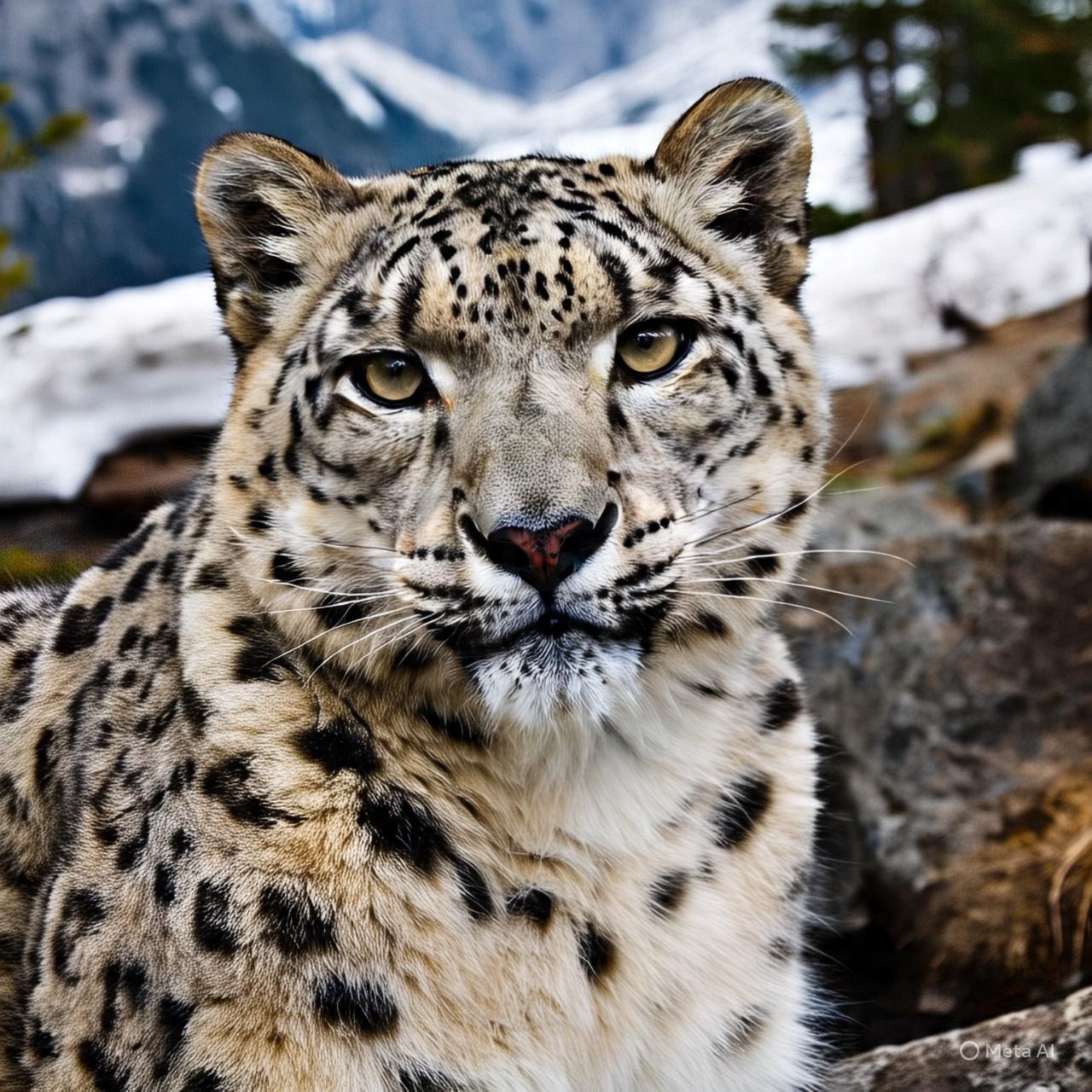The snow leopard (Panthera uncia) is a majestic and elusive big cat native to the mountain ranges of Central Asia, inhabiting rugged and unforgiving landscapes that stretch across 12 countries, including Afghanistan, Bhutan, China, India, Kazakhstan, Kyrgyzstan, Russia, and Pakistan. Its thick, smoky-gray coat with black spots and white underparts helps it blend in with the rocky terrain, while its powerful build, short legs, and broad paws enable it to navigate steep and treacherous landscapes with ease. Snow leopards are skilled hunters, feeding on a variety of mountain ungulates, such as blue sheep and ibex, as well as smaller prey like marmots and hares. They are solitary animals, with large home ranges that they mark with scent to keep other snow leopards away. Despite their adaptability and resilience, snow leopards face numerous threats, including habitat loss and fragmentation due to infrastructure development, human-wildlife conflict arising from livestock depredation, poaching for their fur and body parts, and climate change, which alters the availability of their prey and habitat quality. These challenges have led to a decline in their population and earned them a vulnerable status on the IUCN Red List. Conservation efforts are underway to protect these magnificent cats and their habitats, including initiatives to engage local communities in snow leopard conservation, reduce human-wildlife conflict, and promote sustainable livelihoods. However, more work is needed to ensure the long-term survival of this iconic species, including addressing the root causes of human-snow leopard conflict, strengthening conservation laws and policies, and supporting research and monitoring efforts to better understand and manage snow leopard populations.

